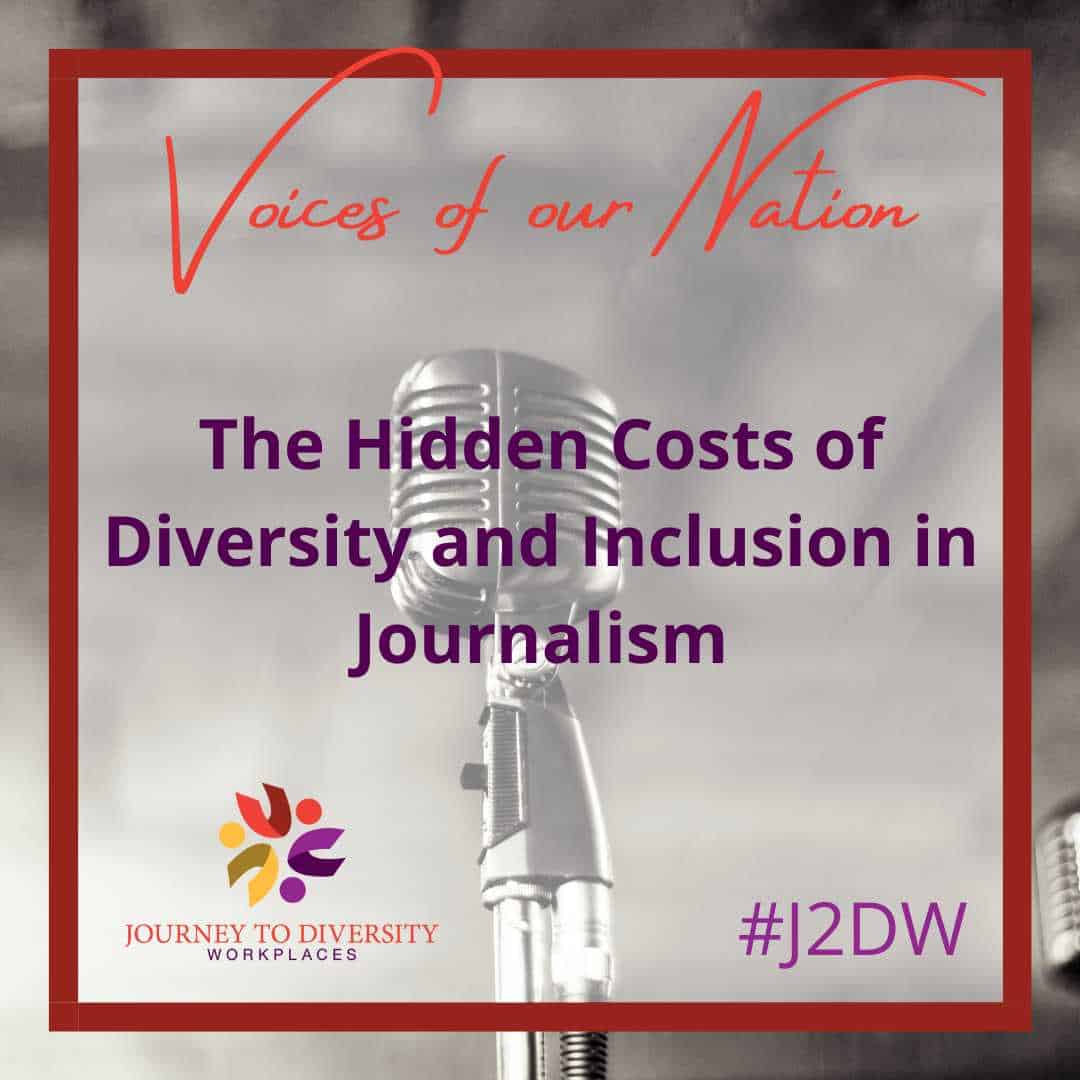When you consider newspaper articles, television broadcasts, think pieces on global and domestic issues, or reports on current events, how often have you thought about the person behind its delivery? The foundation of journalism lies in the hands of the voices that are brave enough to step up, unearth the unspoken topics, and bring them into the limelight. Without a diverse set of hands willing to dig into the truth, we are left with a collage of the same stories about the same people, presented in the same way. This creates turbulence in society’s gradual descent into becoming fully aware and cognisant of the different types of issues that affect underrepresented groups worldwide. It hinders one’s ability to perceive the reality that many racialized and marginalized individuals undergo without any media coverage to bring the issues to light, and hopefully garner support to aid them in their struggles.
The landscape of North American journalism is predominantly white, which introduces fear, alienation, and imposter syndrome in the hearts and minds of aspiring journalists that don’t fit into that box. Breaking through the white noise is quite difficult when there are forces opposing your aspirations from both ends: from your family and culture, and the societal structure that the industry is built upon. How can a person of multiple intersecting identities feel confidence in pursuing a dream that historically does not have a high success rate and may not guarantee financial stability? Getting inside the industry is a struggle in itself because it requires numerous networks, connections, enough money to fall back on until something stable comes along, and quite a lot of luck, to simply dream of a success story.
A Ryerson Review of Journalism makes an important contribution to this discussion– people of colour hired in journalism don’t want to feel constricted to their intersectionality, but at the same time, if not them, then who will tell these stories with its required regard and nuance (Offleash Podcast: Indigenous reporting)? This review helped me consider my own experiences with journalism, reminding me that although diversity in journalism should be prioritized, the act of inclusivity itself tends to be overly glorified, indicating tokenism.
To further this discussion about what inclusivity and diversity mean to those that fall under these criteria in their occupation, it is important to address the day-to-day experiences of their role that might be uncommon to most other employees. On one hand, these journalists have the authority and autonomy to present a community and its experiences with a more personal, accurate gaze, and present their stories with the nuance they require. This can include understanding and correct usage of culturally appropriate vocabulary, avoiding many traps of descriptions, assumptions, and conclusions based on stereotypes, and creating a piece that retains authenticity while opening up an uncomfortable discussion.
However, on the other hand, this burden of accuracy and if their work is truly validated by those being represented, can cause a toll on the mental health of these journalists. In addition, they tend to shoulder the weight of representing an entire community in their work environment. Questions regarding the usage of language, jokes mentioned in scripts, cultural clothing, and inquiries about current events get redirected to one person.
Many experiences of women of colour illustrate that despite being qualified, sometimes overqualified, their white male counterparts are given opportunities and projects that will further their careers, while these women are asked to feel gratitude for the position they were able to achieve. Such work conditions, in addition to the already perceived scarcity of racialized and marginalized individuals in journalism, and the fear of losing such a rare opportunity (for those in these communities), all lead to unhappy, anxious employees. In order to initiate change and prevent employee dissatisfaction, employers in this industry must educate themselves, reevaluate their biases, and determine what equity, diversity, and inclusion mean for them and their projects.
The number of people, once invisible, that feel heard, recognized, and respected due to the reach of equitable journalism is astonishing. If the conversation around inclusivity in this industry shifted from the oh-so-tiring diversity quota or an overused word such as representation (which holds tremendous value to those affected, but now exists as a buzz-word of sorts in many media spaces), to a narrative about visibility and recognition, then perhaps more change would be evident.
References
Offleash Podcast: Indigenous reporting. Why Diversity. (n.d.). https://diversity.rrj.ca/
This article was written by summe student lesha Prabhudesai . This article was funded by the Government of Canada


